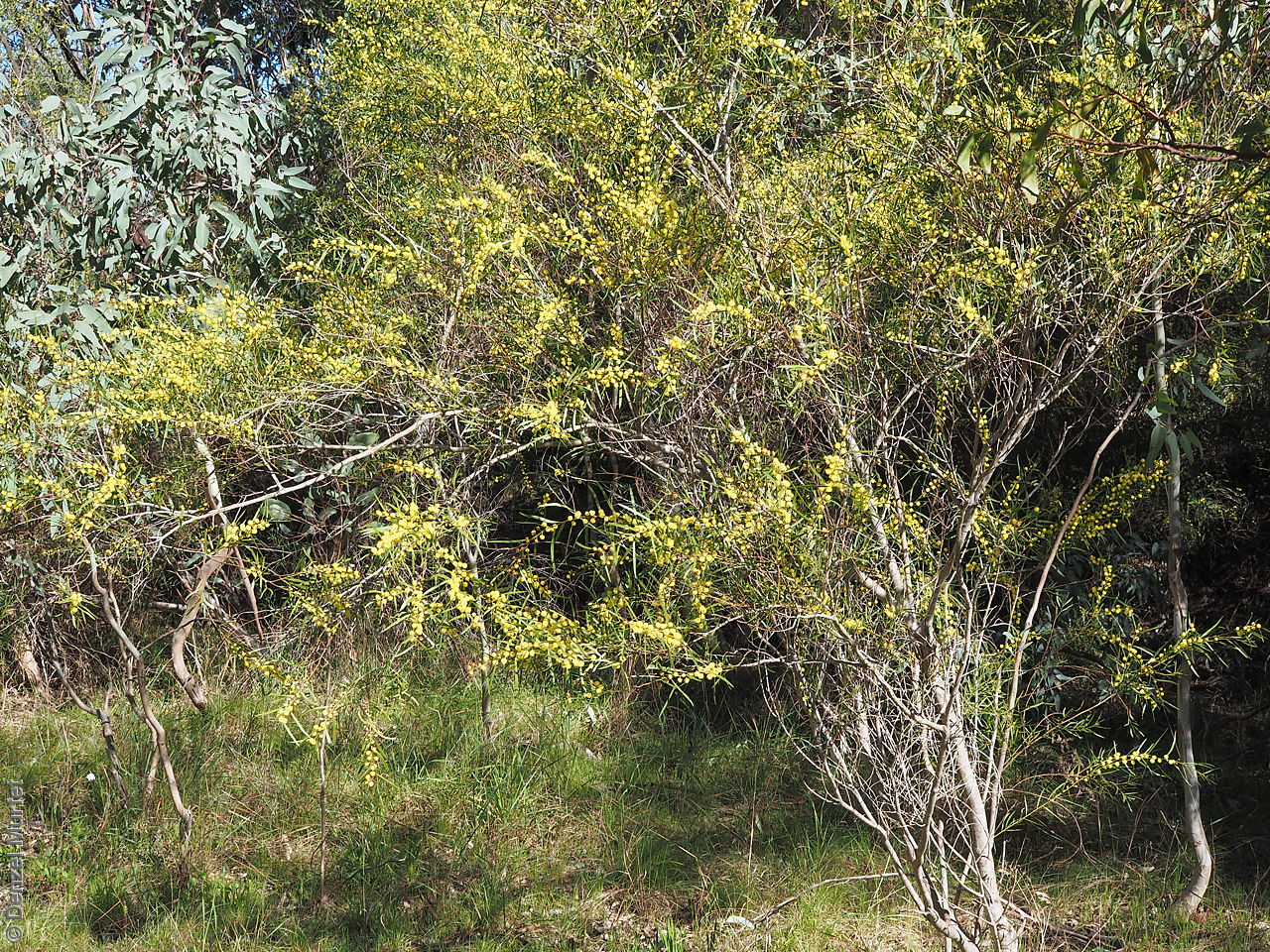
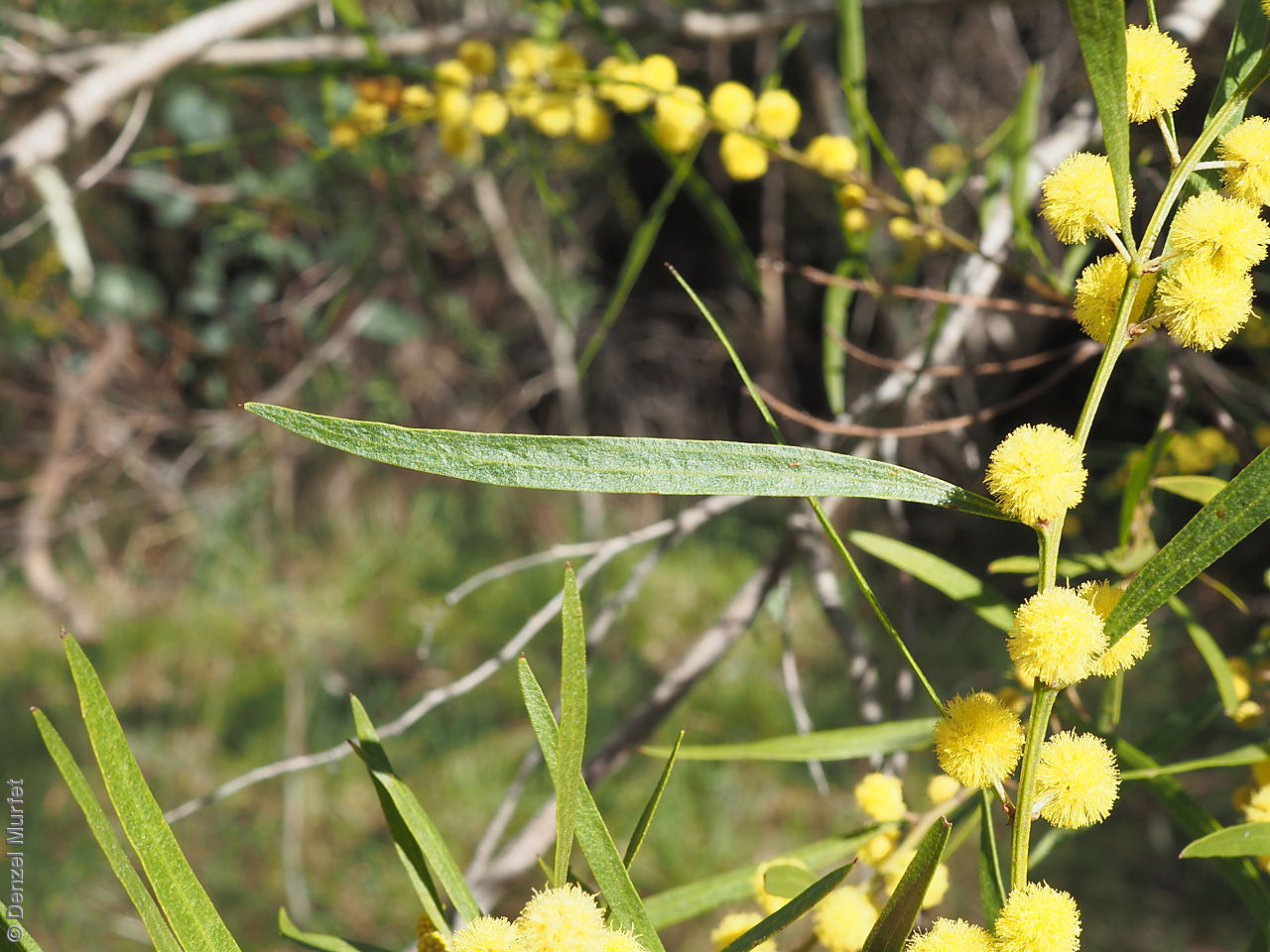
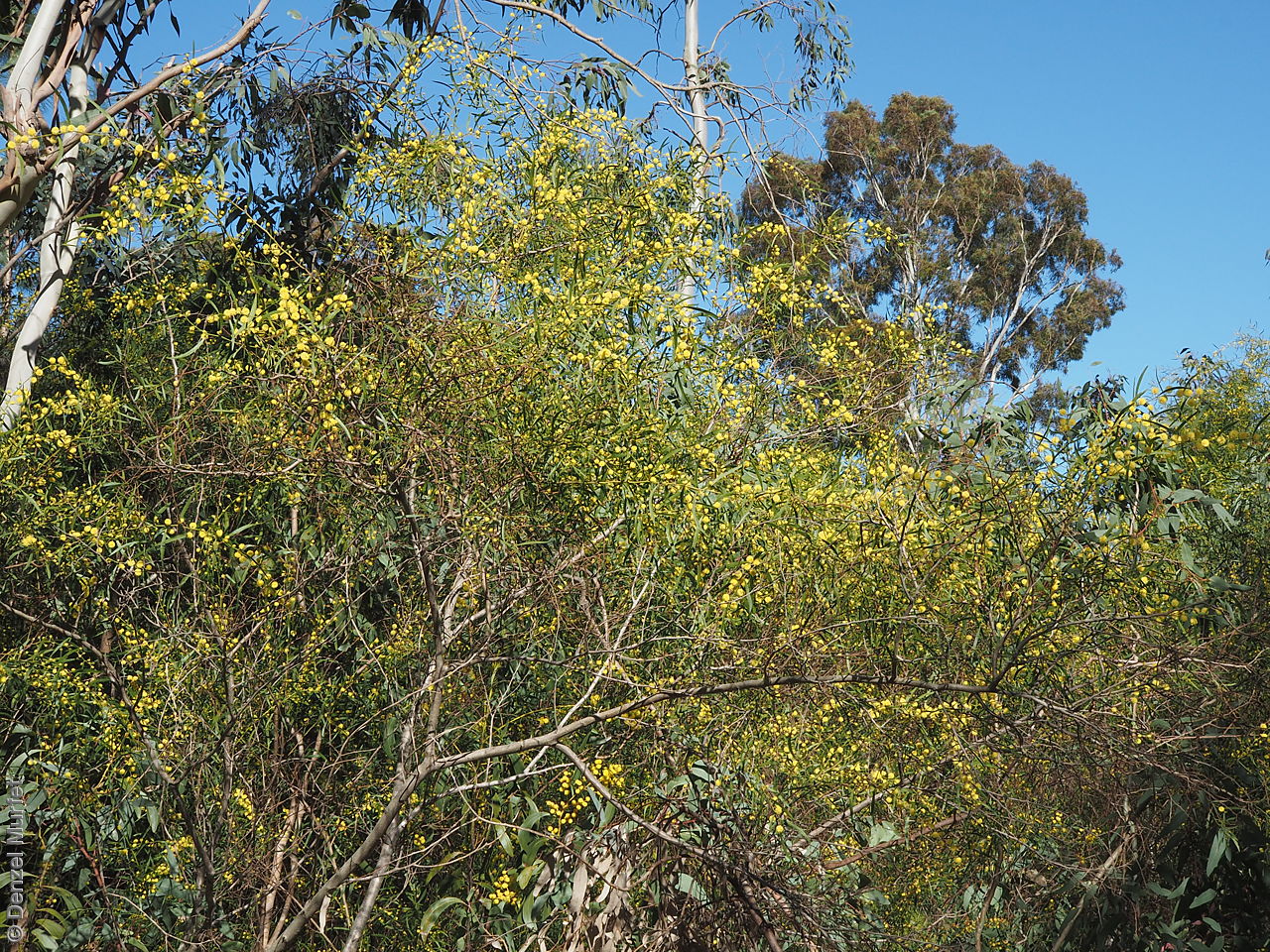
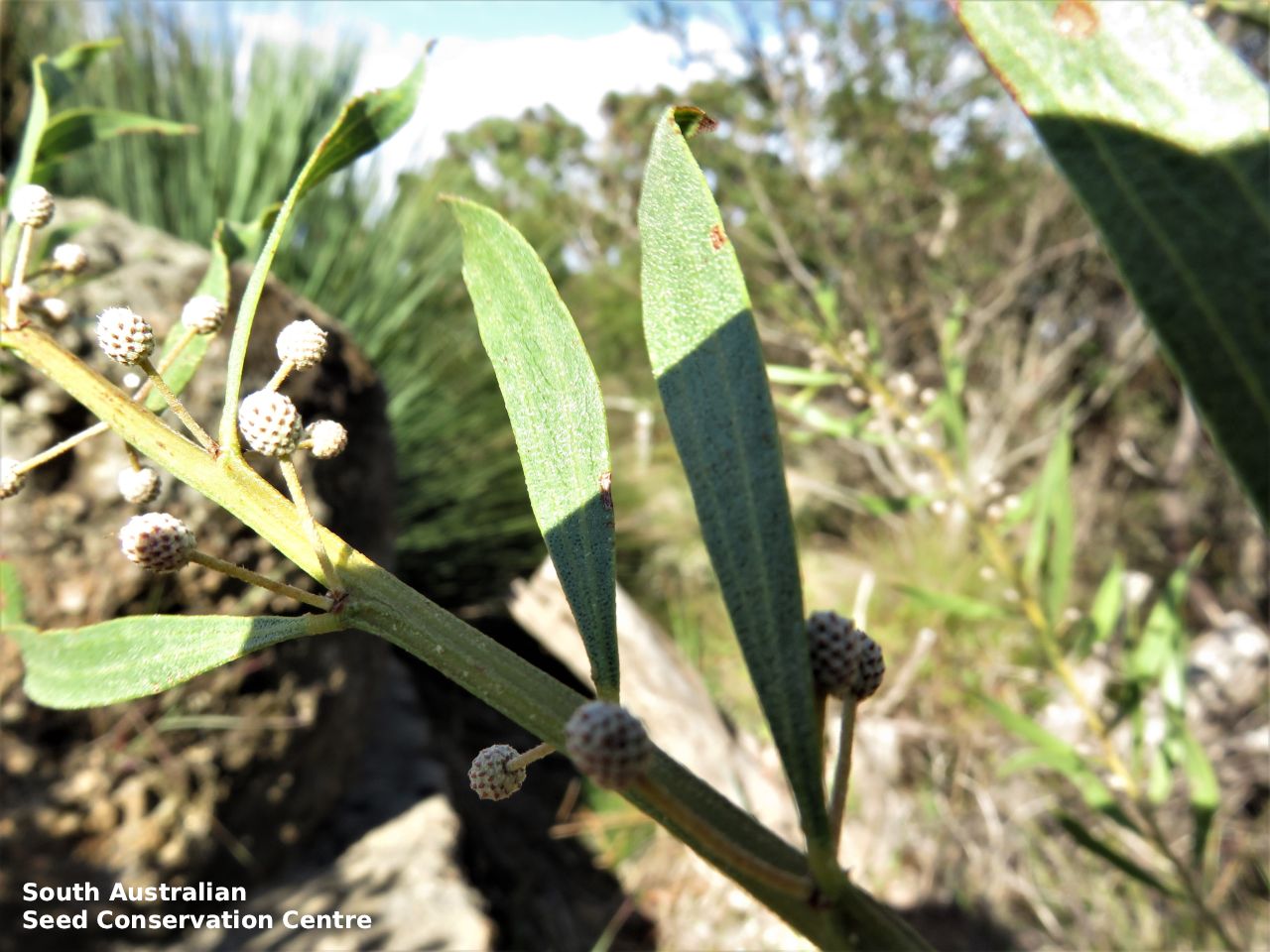
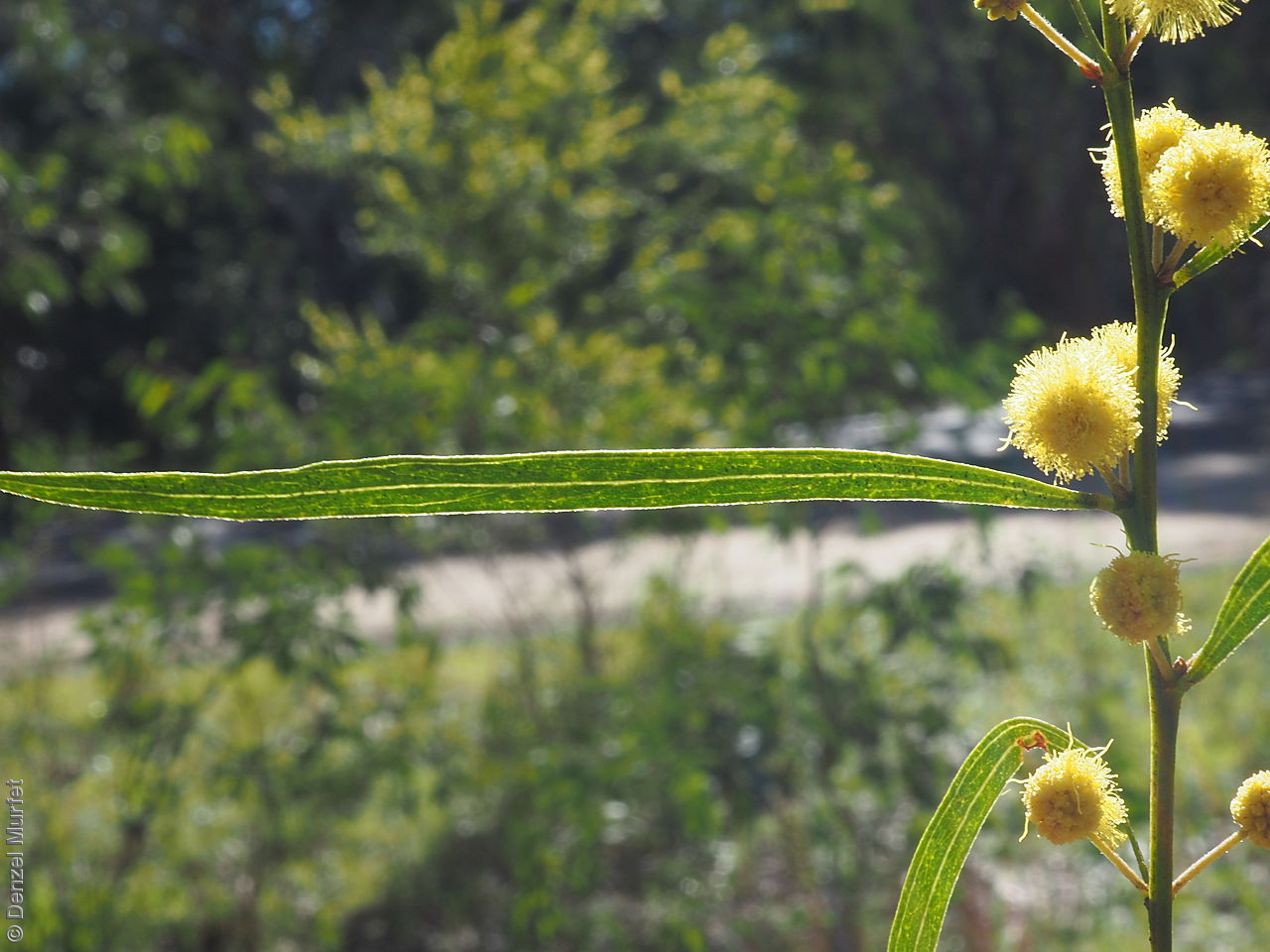
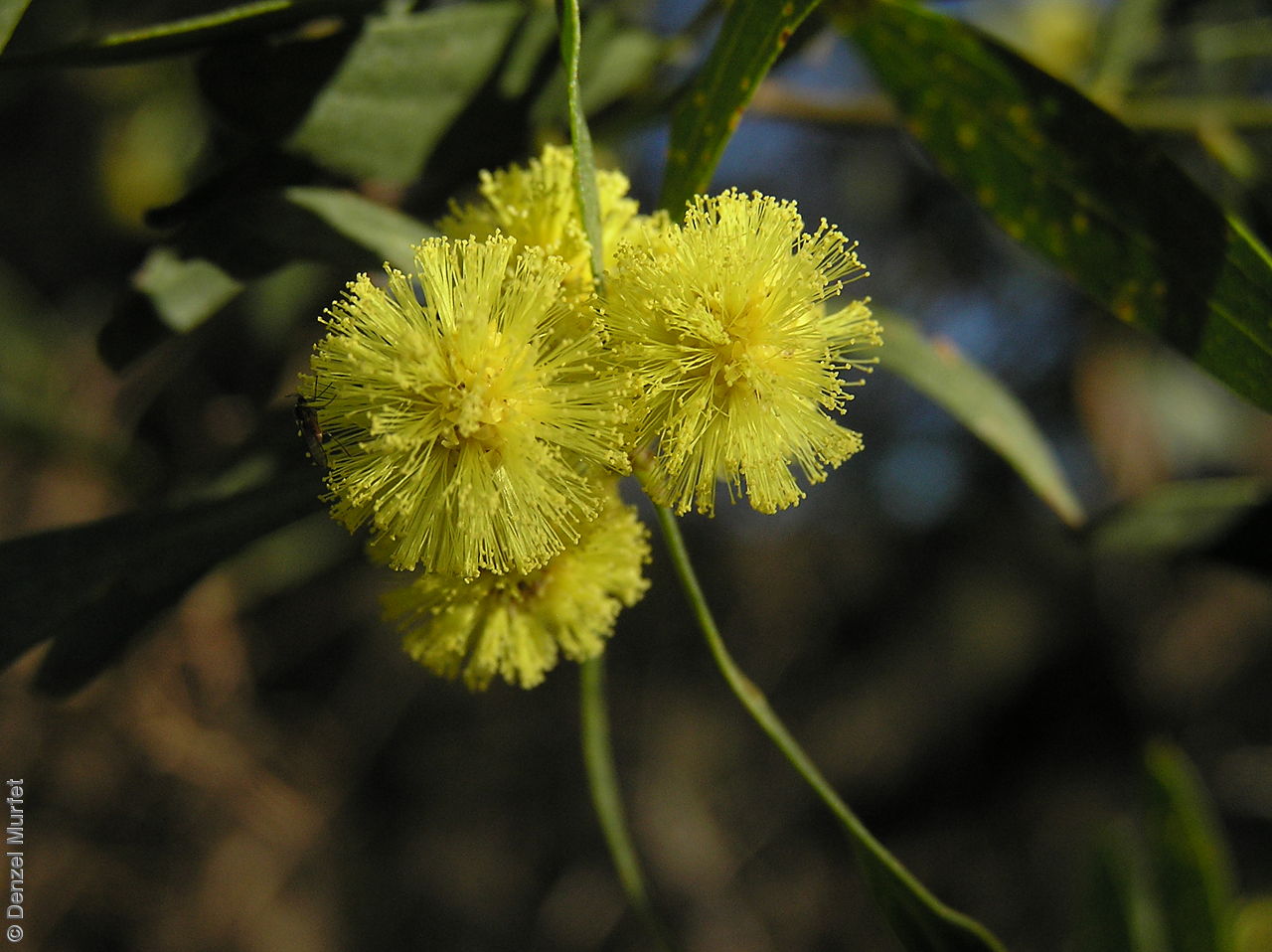
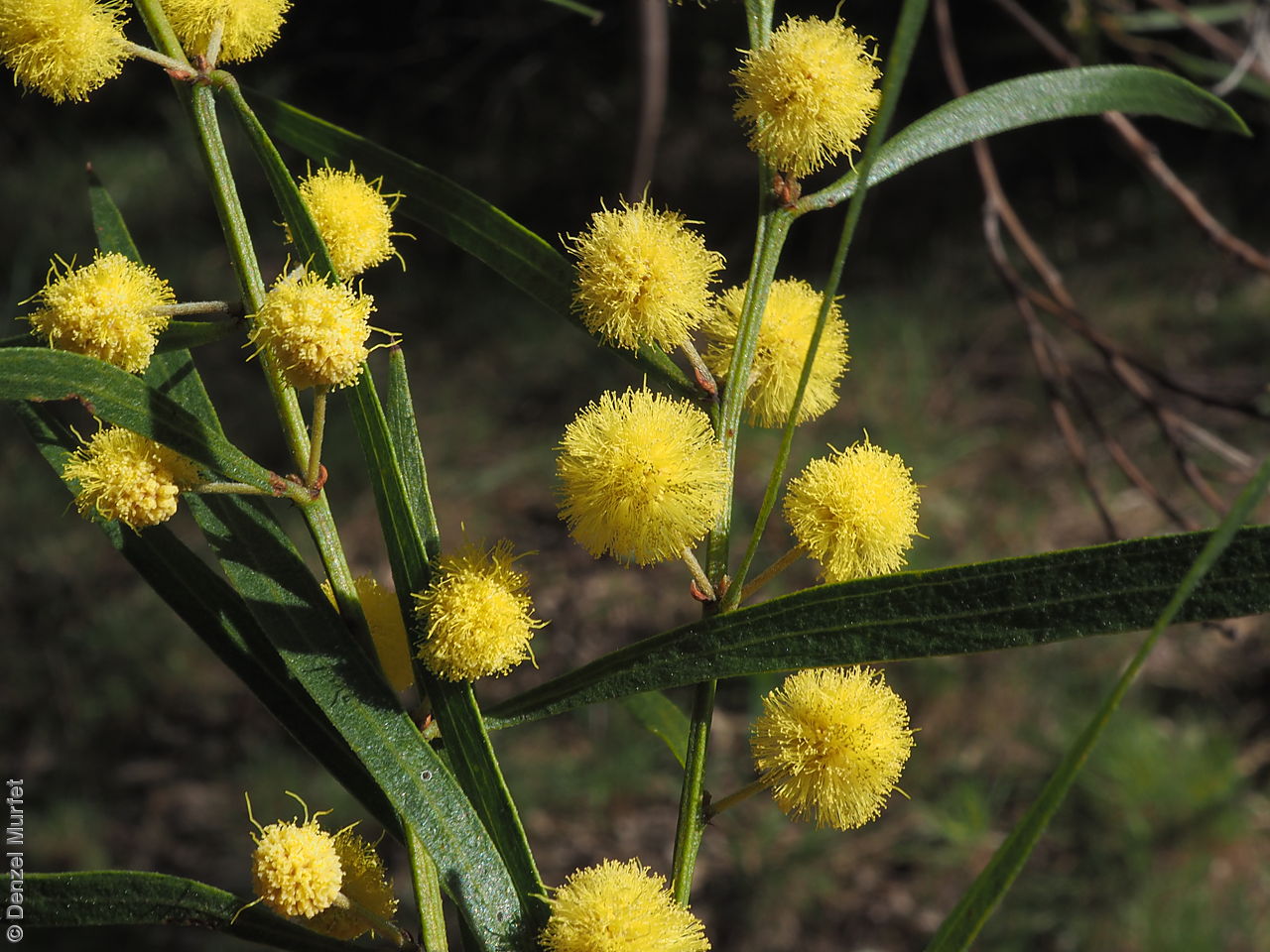
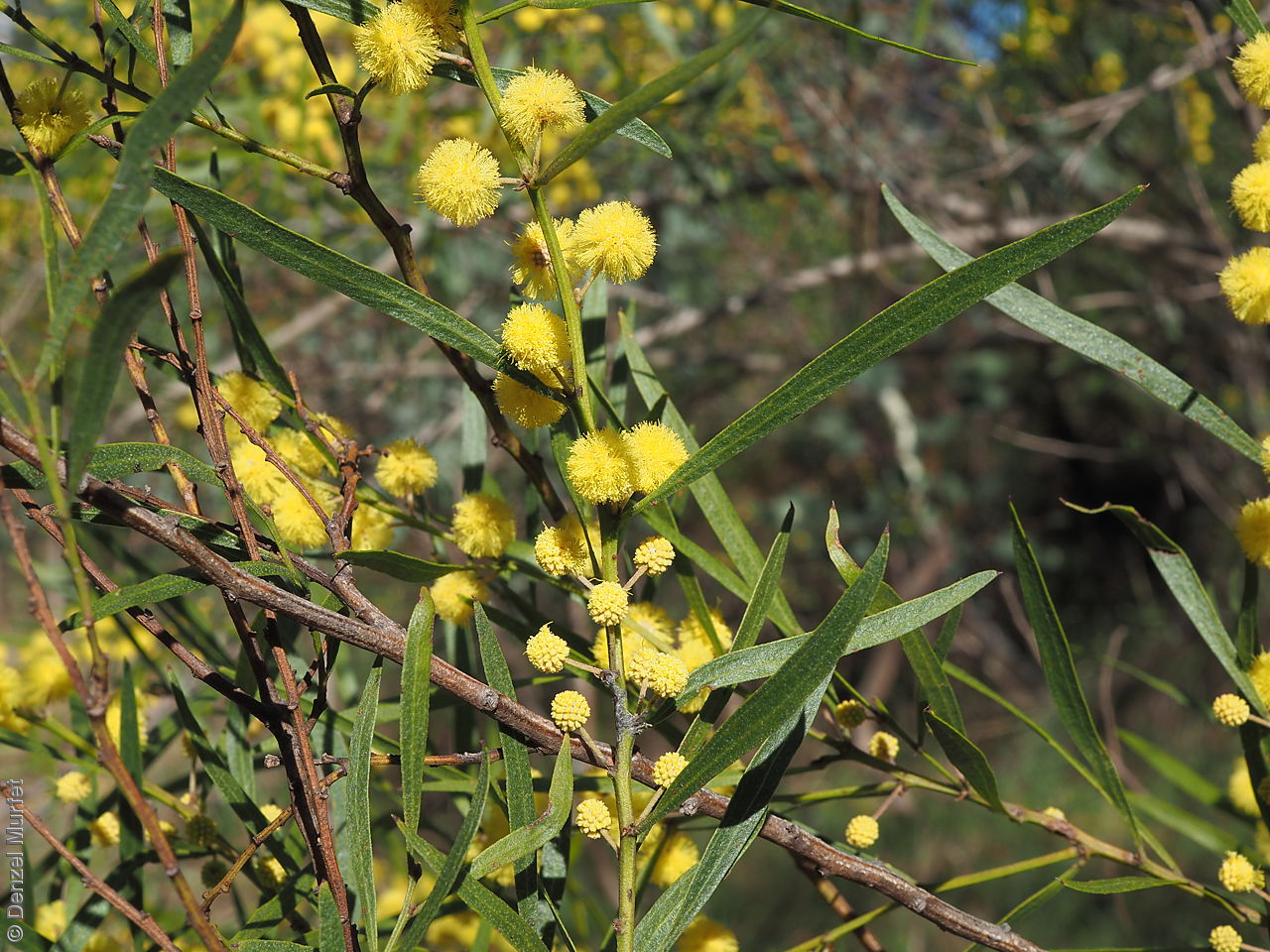
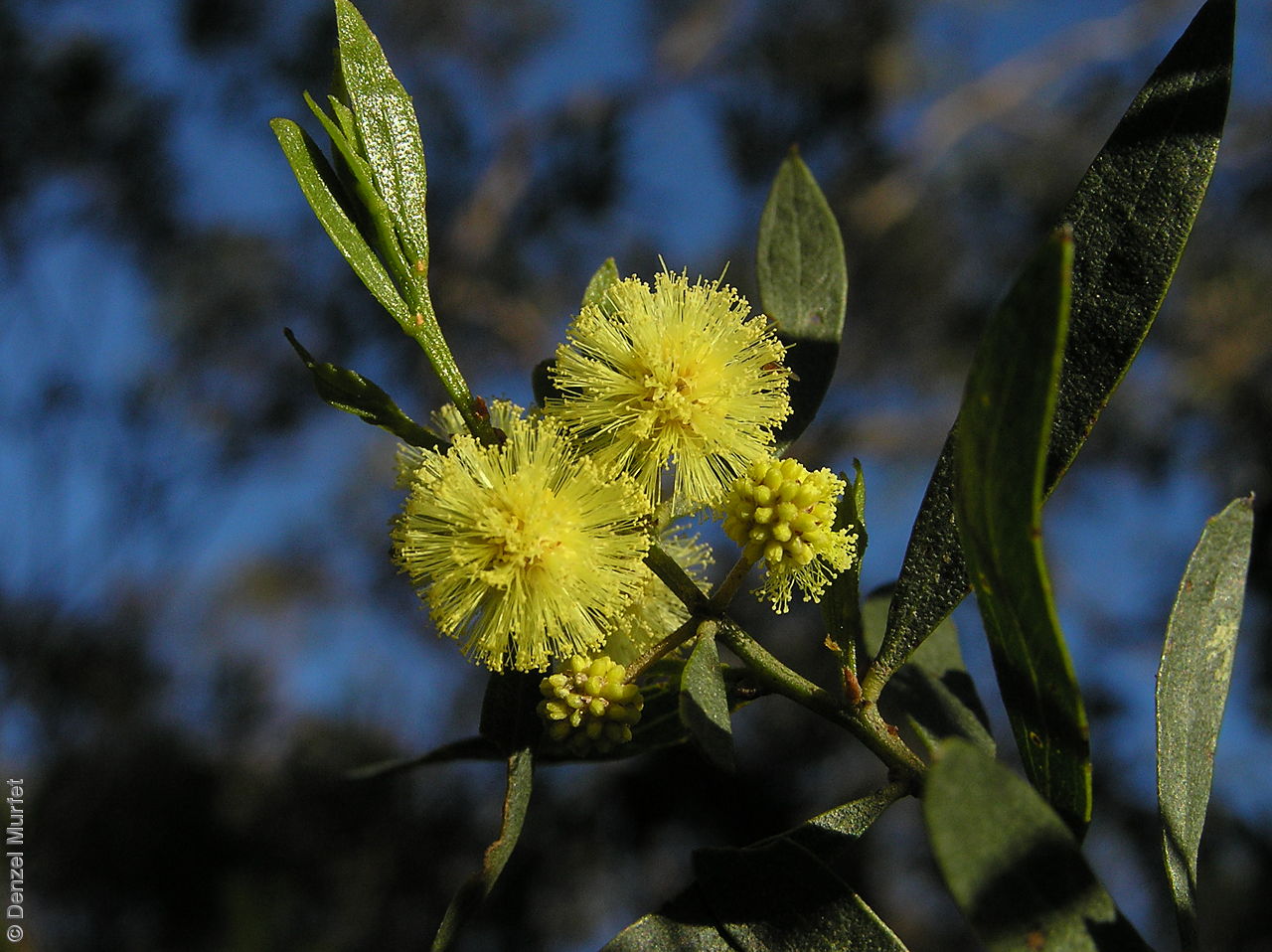
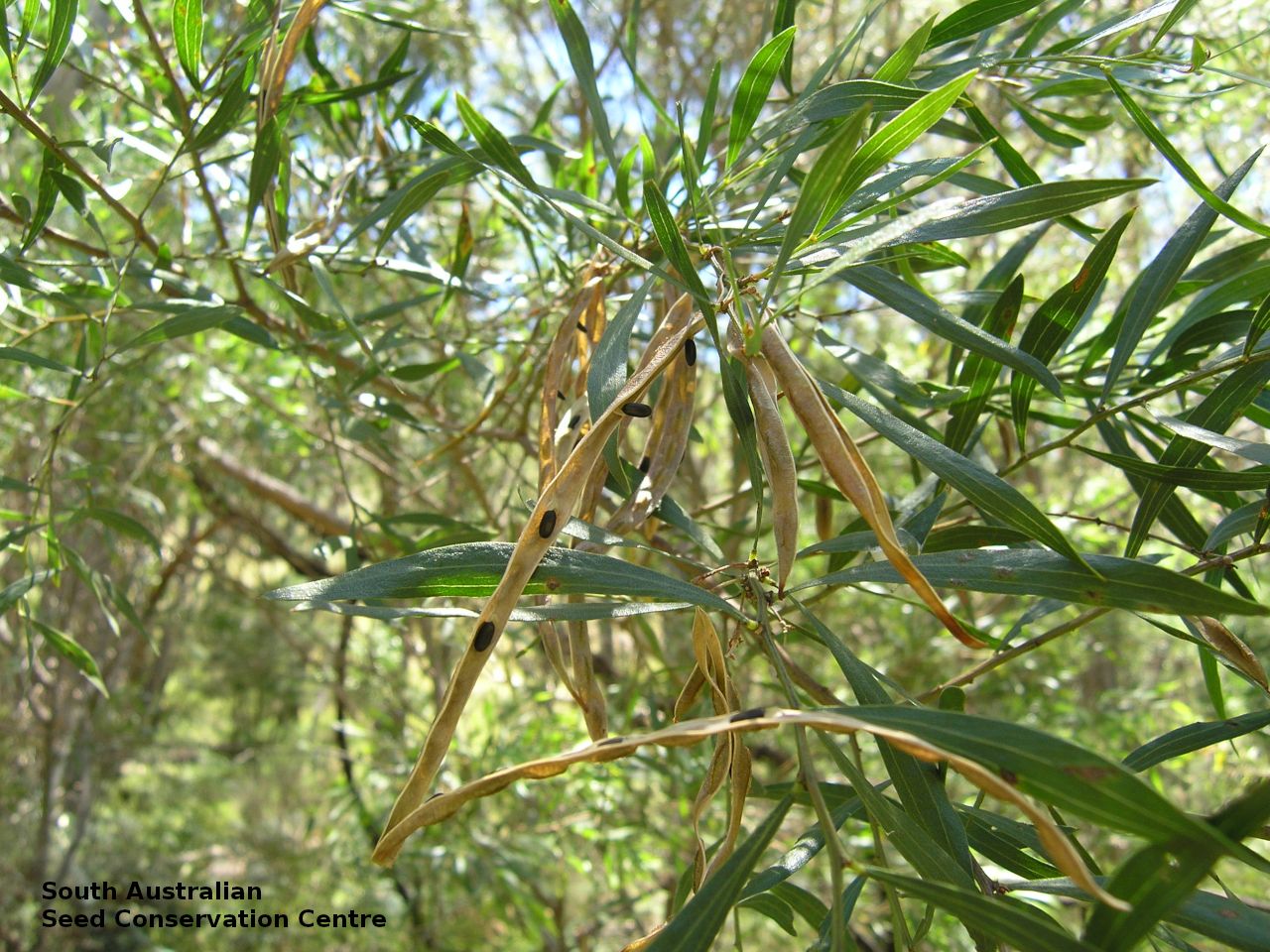
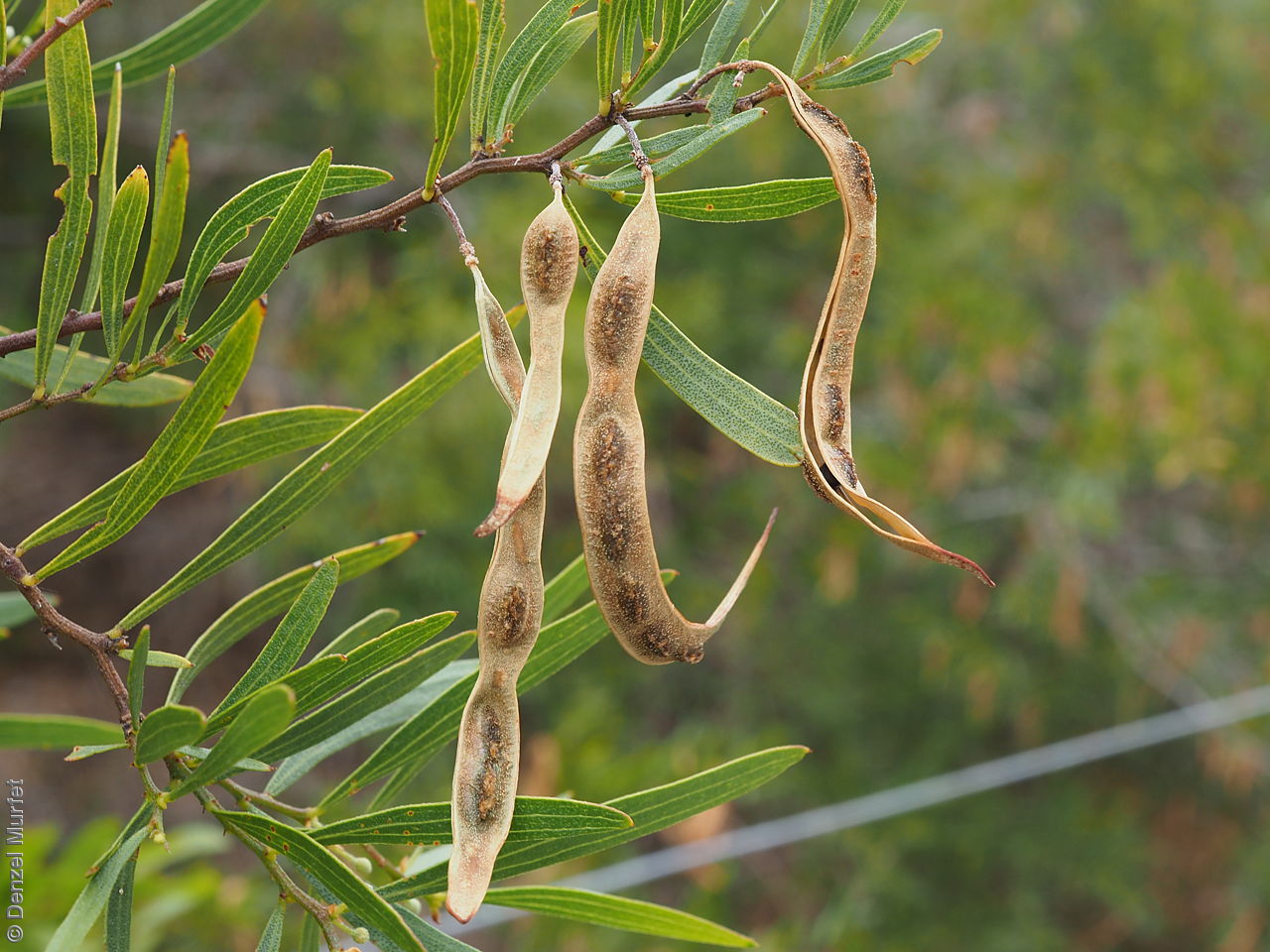
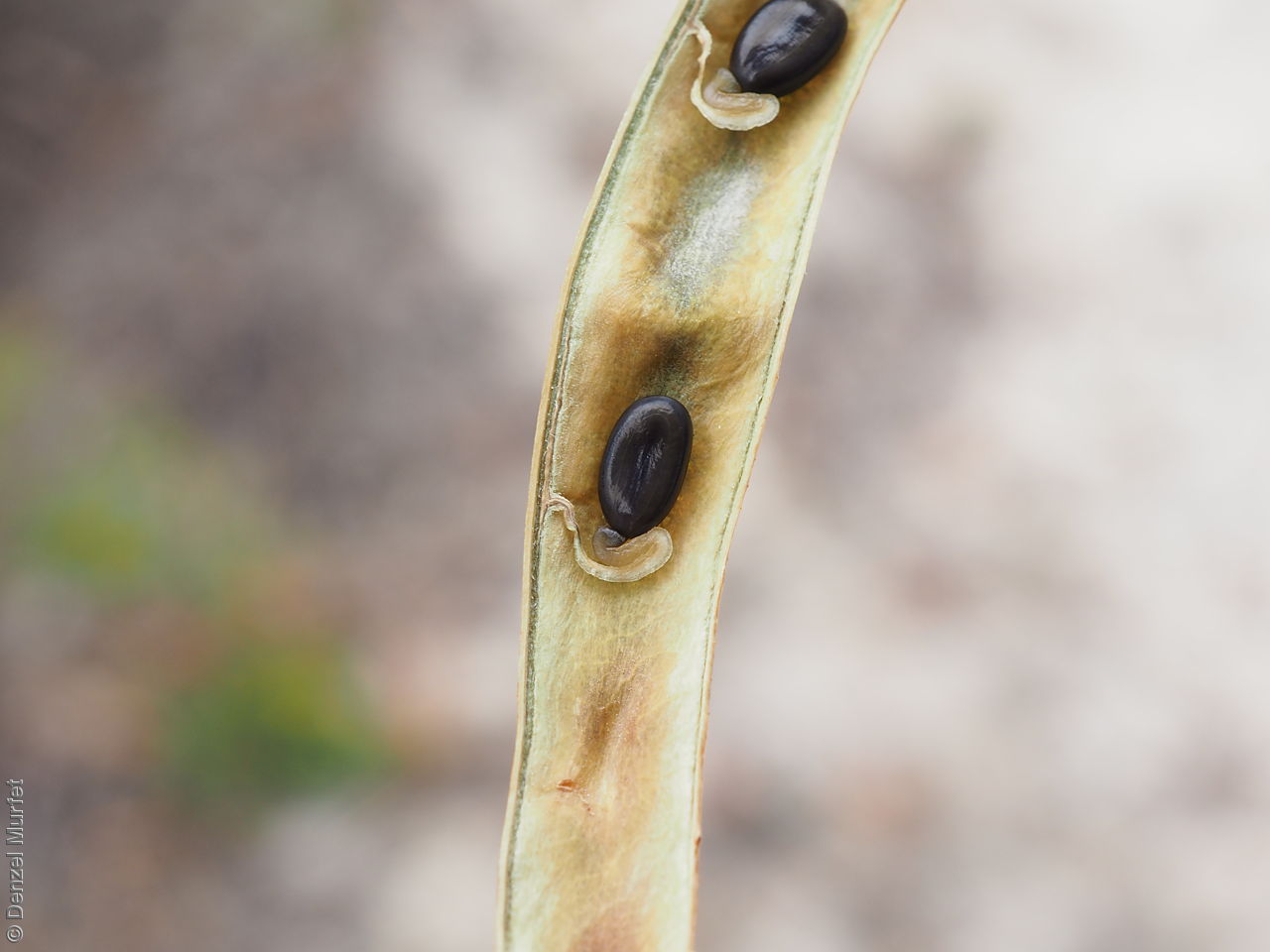
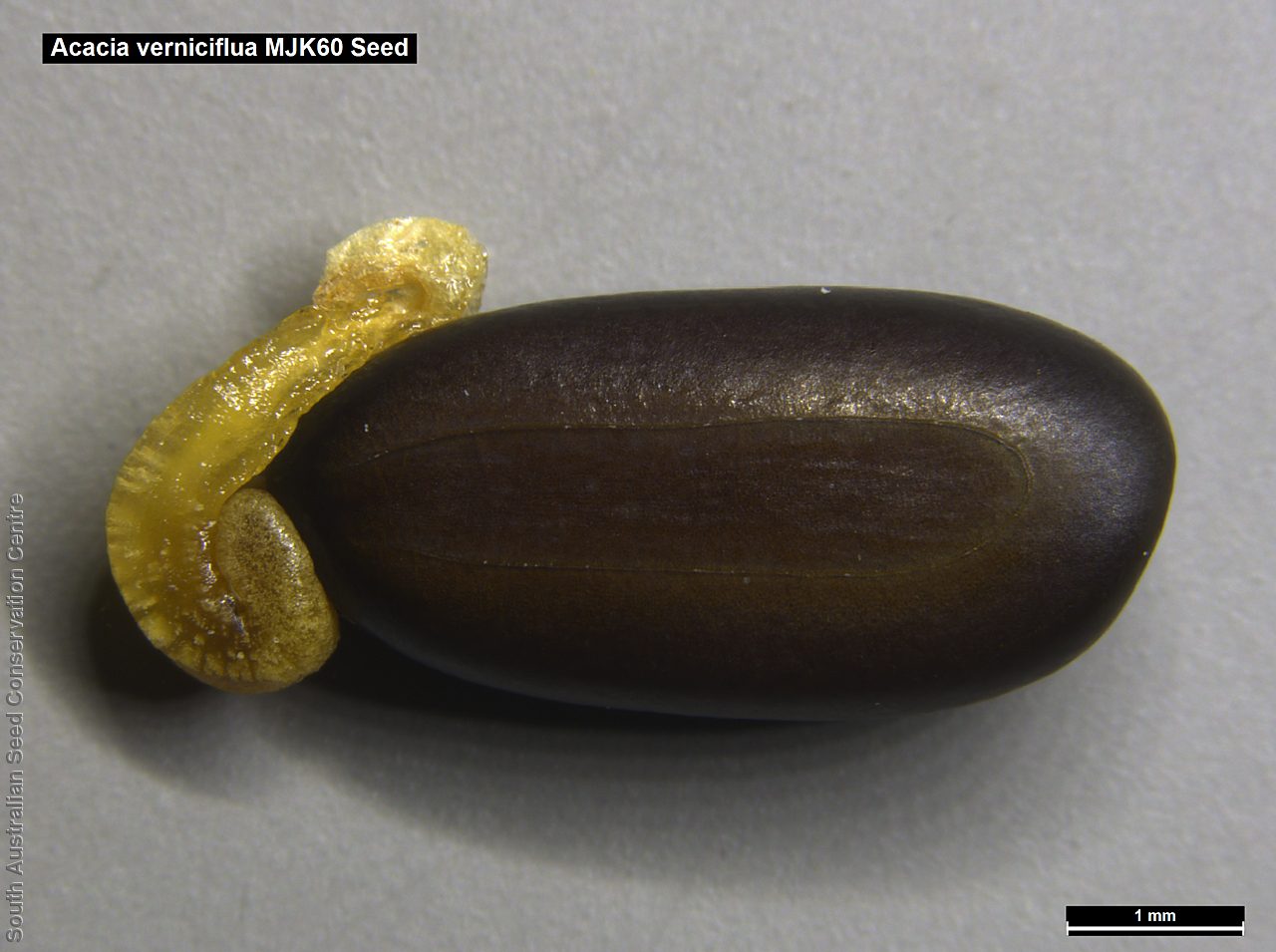
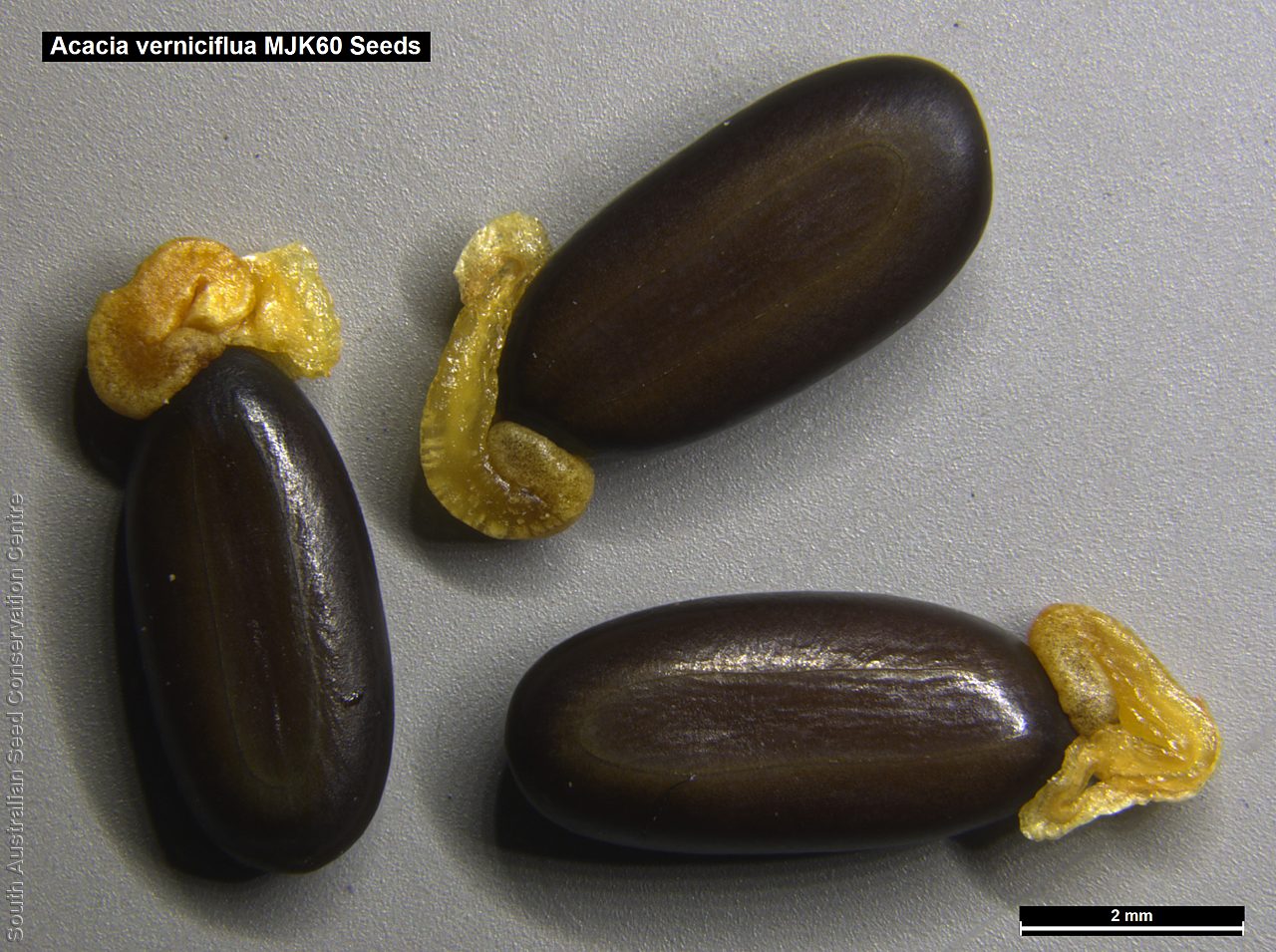

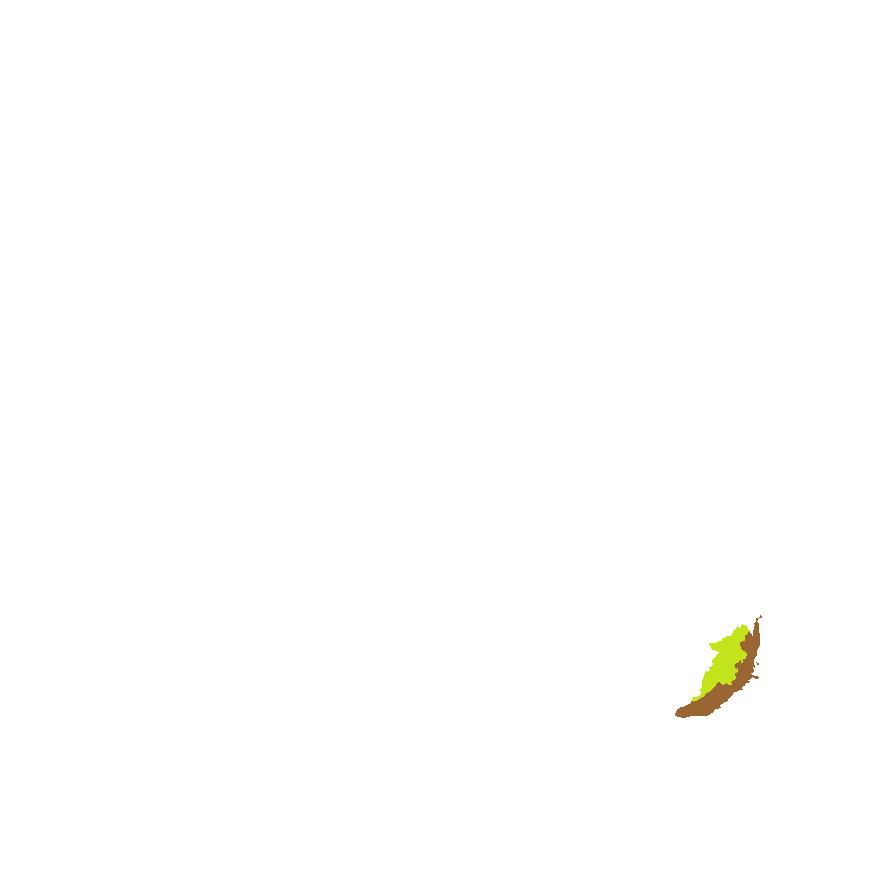
Botanical art
Prior names
Acacia leprosa third variant
Acacia leprosa var. binervis
Acacia verniciflua var. pendula
Acacia verniciflua first variant
Acacia gracilis
Acacia binervata
Acacia virgata, nom.nud.
Racosperma vernicifluum
Etymology
Acacia from the Greek 'akakia' and derived from 'ake' or 'akis' meaning a sharp point or thorn and 'akazo' meaning to sharpen. Dioscorides, the Greek physician and botanist used the word in the 1st century AD for the Egyptian thorn tree, Acacia arabica. Verniciflua probably from old English 'vernis' meaning varnish and Latin 'flua', flowing, referring to the resinous nature of the plant, especially when young.
Distribution and status
Found in a small area in southern Mount Lofty Ranges in South Australia, growing in valleys and on hillsides, associated with Eucalyptus obliqua and E. baxteri in open forest. Also found in Queensland, New South Wales, Victoria and Tasmania. Native. Uncommon in South Australia. Uncommon in Queensland. Common in the other States.
Herbarium regions: Murray, Southern Lofty, South Eastern, Green Adelaide
NRM regions: Adelaide and Mount Lofty Ranges, South Australian Murray-Darling Basin, South East
AVH map: SA distribution map (external link)
Plant description
Tall slender, viscid shrubs or small trees to 5 m high, with slender, slightly angular-striate, erect or spreading branches, becoming less resinous on mature stems. Leaves oblong to linear-lanceolate or narrow-elliptic, to 12 cm long and 15 mm wide; straight or slightly curved, viscid, glandular-dotted. One longitudinal vein near the centre is usually more prominent than the marginal vein. Glands small, one near the base with sometimes up to 3 additional glands scattered along the upper margin. Inflorescences axillary, mostly twin with globular, bright-yellow flower-heads. Flowering between July and September. Fruits are brown, linear pod to 10 cm long and 5 mm wide, straight or curved, biconvex, viscid and greenish when young, becoming less viscid and brown when mature; margins straight or slightly constricted between seeds. Seeds are hard, yellowish brown ellipsoid to oblong seed to 6 mm long and 3 mm wide. Seed embryo type is investing.
Seed collection and propagation
Collect seeds between October and December. Collect mature pods that are turning brown, with hard, dark seeds inside. Place the pods in a tray and leave to dry for 1-2 weeks or until the pods begin to split. Then rub the dried pods to dislodge the seeds. Use a sieve to separate any unwanted material. Store the seeds with a desiccant such as dried silica beads or dry rice, in an air tight container in a cool and dry place. From one collection, the seed viability was high, at 90%. This species has physical dormancy that needs to be overcome for the seed to germinate (e.g. nicking or softening the seed coat).
| Location | No. of seeds (weight grams) | Number of plants | Date collected | Collection number Collection location | Date stored | % Viability | Storage temperature |
|---|---|---|---|---|---|---|---|
| BGA MSB | 7,000 (94 g) 7,000 (94 g) | 50+ | 22-Dec-2004 | MKJ60 Southern Lofty | 31-Mar-2006 | 95% | -18°C |
Number of plants: This is the number of plants from which the seeds were collected.
Collection location: The Herbarium of South Australia's region name.
% Viability: Percentage of filled healthy seeds determined by a cut test or x-ray.